As I embarked on the Mera Peak trek, determination and excitement quickened my pulse. Standing at Nepal’s highest trekking summit meant pushing my limits on an incredible Himalayan journey.
I pictured gazing down from dizzying heights upon snow-capped giants like Cho Oyu. The remote villages and Buddhist culture enriching the trail ahead promised memories to last lifetimes.
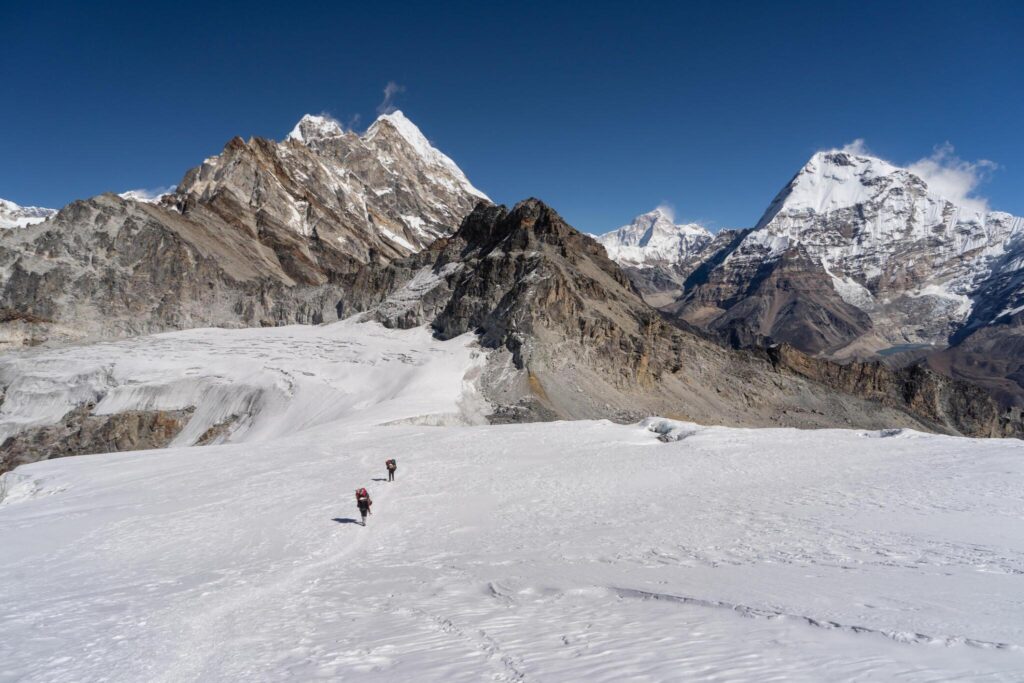
With my sights set on Mera’s thin air over 21,000 feet up, each step took me closer to views only the hardiest adventurers would ever savor.
This is just the beginning. Buckle up, because the next few paragraphs will take you on a whirlwind adventure you won’t soon forget.
Why Choose Mera Peak for Trekking?
Mera Peak stands out in the Himalayas for its unique appeal. Unlike other treks, it offers a blend of moderate challenge and stunning scenery. This trek is perfect for those looking to step into high-altitude climbing without extreme technical demands.
But the real cherry on top is the panoramic playground of five 8000m giants, including Everest. Imagine standing there, dwarfed by these legendary titans, their snow-clad shoulders brushing the sky.
It’s like peering into a postcard come to life, a kaleidoscope of glacial glint and wind-carved rock. Compared to this amphitheater of Everest and its kin, other treks feel like peeking through a keyhole.
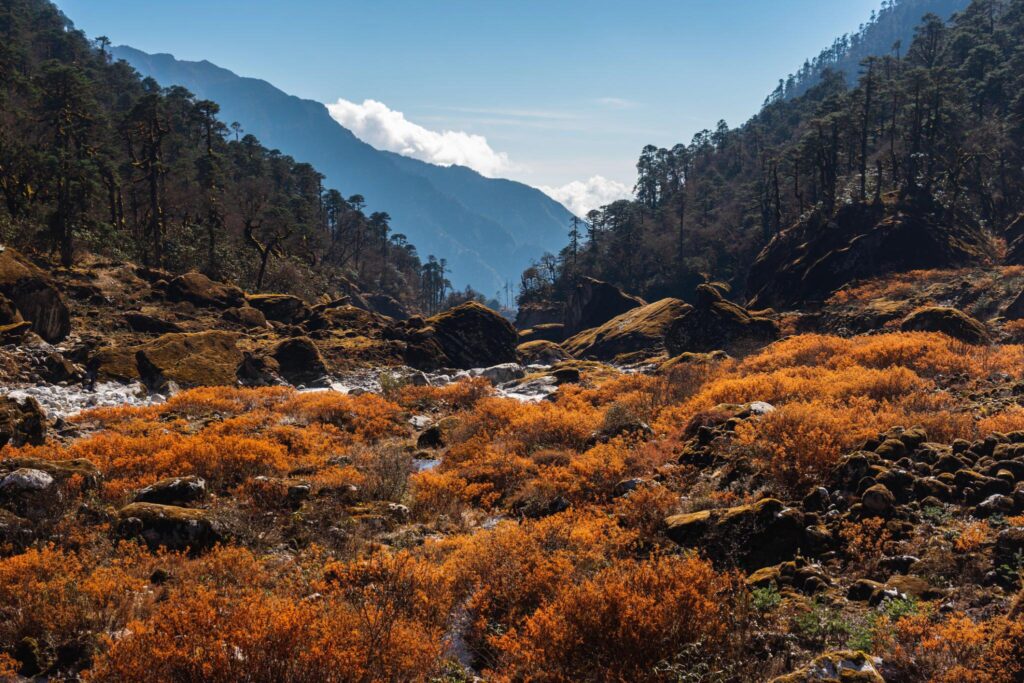
Preparing for the Mera Peak Trek
Conquering Mera Peak: Gear Up and Get Ready to Fly!
Mera Peak beckons, but let’s be real, it’s no walk in the park. To stand triumphant on its summit, you need to prepare like a pro. So, let’s get down to the nitty-gritty:
Fitness First:
- Train Hard: Think uphill hikes, lunges, squats, and anything to build leg strength and cardiovascular endurance.
- Acclimatize Wisely: Slow ascent is key. Spend nights at increasing altitudes in the days leading up to the climb. Your body will thank you (and won’t reward you with altitude sickness!).
Gear Essentials:
- Warm Layers: Think thermal socks, fleece mid-layers, and a down jacket – layers are your friends!
- Sturdy Boots: Crampon-compatible and waterproof – your feet will be your loyal steeds, treat them well!
- Sun Protection: Sunglasses, sunscreen, and a hat – the Himalayan sun is no joke!
- Headlamp: For those pre-dawn summit pushes.
Don’t Forget:
- Trekking Poles: They’ll be your trusty balance buddies.
- Hydration Pack: Stay fueled and keep those vital fluids flowing.
- First-Aid Kit: Be prepared for anything, from blisters to minor cuts.
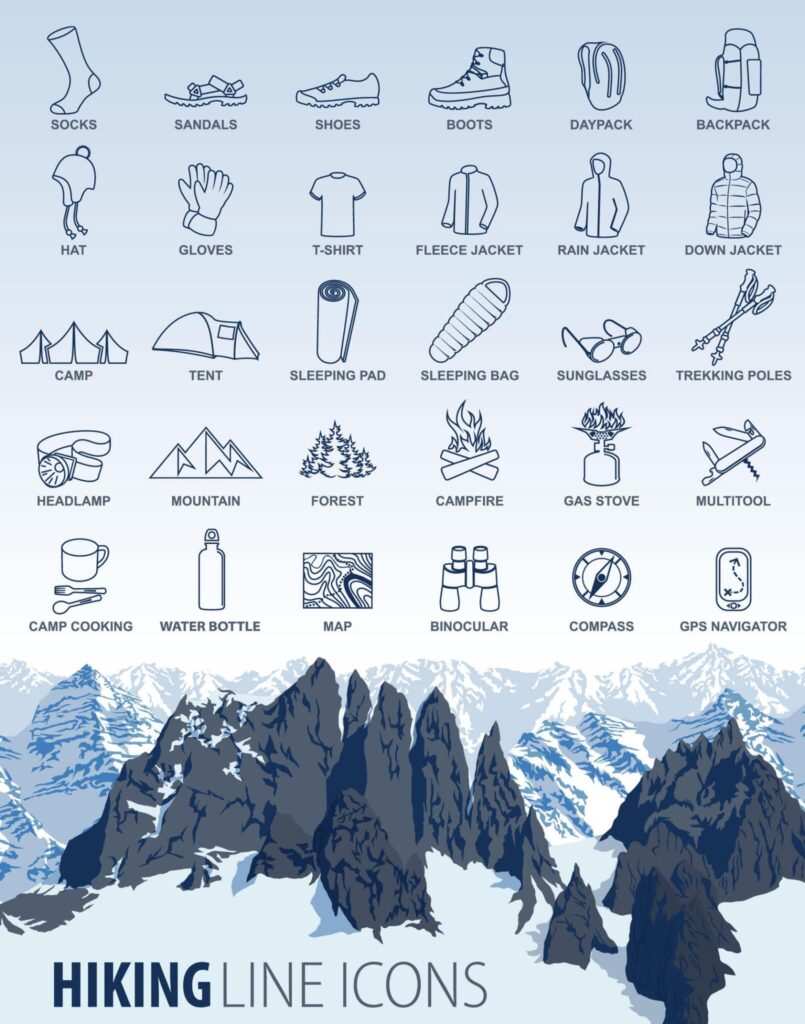
Consult with experienced trekkers or outfitters for a more detailed list specific to your needs and the time of year.
Ready to pack your bags and chase the horizon? The next part unveils the exciting journey that awaits, day by glorious step!
The Trek Outline (Travel Plan)
The trail to Mera Peak unfolds like a story with each day revealing a new chapter. Here’s a glimpse of the typical itinerary:
Days 1-2: Kathmandu Captivation: Breathe in the vibrant chaos of Kathmandu, explore ancient temples, and gear up for adventure.
Day 3: Lukla Landing: Take a thrilling flight to Lukla, the gateway to the Himalayas, and embark on your trek through verdant valleys and quaint Sherpa villages.
Days 4-8: Base Camp Bound: Trek through rhododendron forests, cross roaring glacial rivers, and acclimatize in charming villages like Kothe and Thaknak, soaking in the stunning Himalayan panoramas.
Day 9-10: Acclimatization Awaits: Rest and explore Khare Base Camp, venturing to Mera La for breathtaking views and preparing your body for the summit push.
Days 11-12: High Camp Heroics: Ascend to High Camp, nestled amidst the icy embrace of the Himalayas, and rest up for the ultimate challenge.
Day 13: Summit Showdown: Rise before dawn, strap on your crampons, and conquer the icy slopes of Mera Peak. Witness the sunrise paint the world in gold as you stand atop the “Queen of Himalayas.”
Days 14-17: Descent and Delight: Retrace your steps, relishing the familiar landscapes with a newfound appreciation. Celebrate your victory in Lukla before flying back to Kathmandu, your heart brimming with memories.
Remember, this is a flexible framework. Weather, individual pace, and acclimatization needs can influence the exact timing. But one thing’s for sure: every step on this journey will be an unforgettable encounter with the magic of the Himalayas. Stay tuned for the next parts!
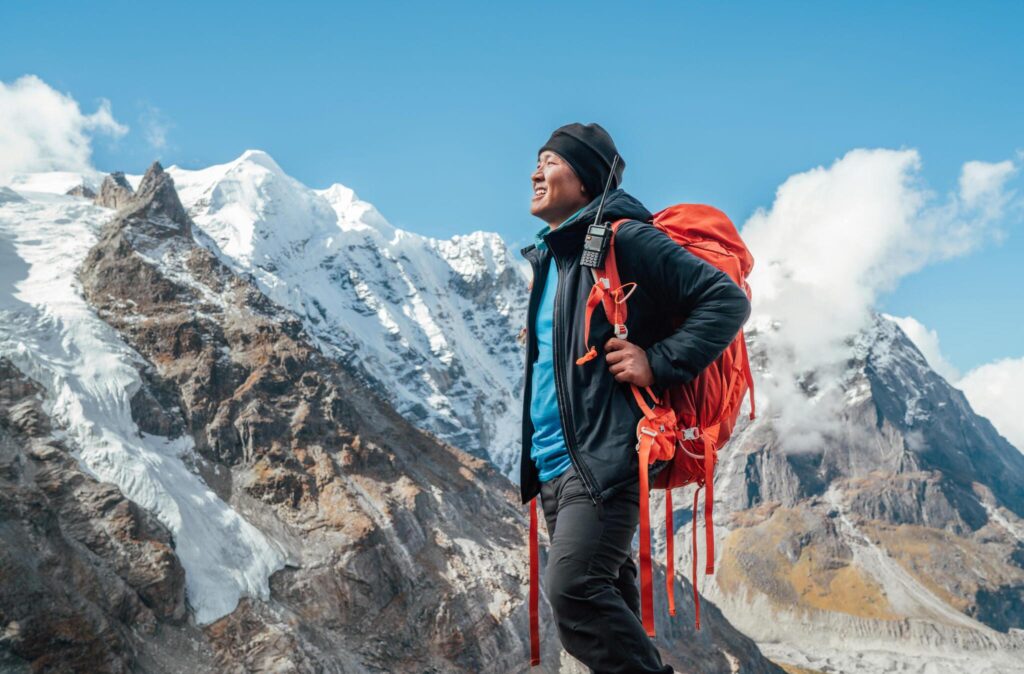
Challenges and Rewards of the Trek
Trekking Mera Peak presents both challenges and rewards:
- Challenges:
- Physical endurance: Steep climbs and high altitude demand stamina.
- Mental resilience: Coping with altitude and unpredictable weather tests determination.
- Rewards:
- Stunning views: Panoramic sights of Everest and neighboring giants.
- Achievement: Reaching the summit brings immense satisfaction and a sense of triumph.
Best Time to Trek Mera Peak
The best times to trek Mera Peak are:
- Spring (March to May):
- Clear skies and warmer weather.
- Blooming rhododendrons enhance the trails.
- Stable conditions are ideal for summit attempts.
- Autumn (September to November):
- Crisp visibility and dry paths.
- Post-monsoon freshness in the air.
- Fewer clouds, offering uninterrupted mountain views.
Both seasons offer distinct advantages, from spring’s vibrant landscapes to autumn’s clear, stable conditions.
Cultural Insights
Trekking to Mera Peak offers a deep dive into Sherpa culture:
- Local Villages: Encounter traditional Sherpa villages like Lukla and Khare.
- Lifestyle: Observe their self-sufficient, agrarian way of life.
- Hospitality: Experience the warm, welcoming nature of the Sherpa people.
- Cultural Practices: Witness unique customs and Buddhist rituals.
- Architecture: See traditional Sherpa homes and monasteries.
This journey isn’t just a physical trek but a cultural immersion, offering insights into the resilient and rich heritage of the Sherpa community, nestled in the heart of the Himalayas.
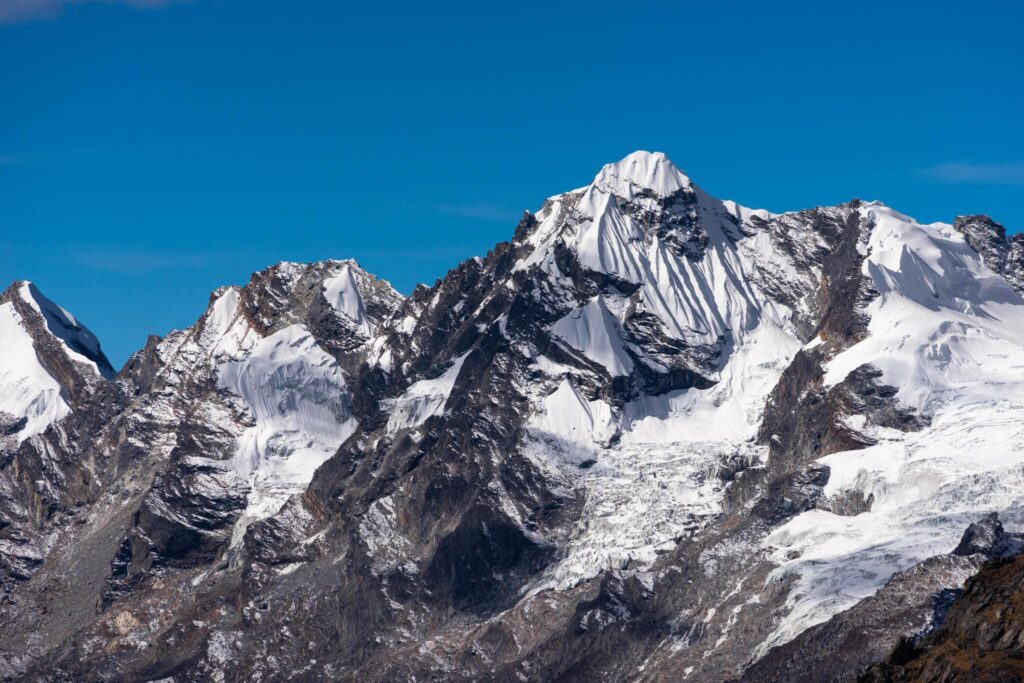
Safety and Sustainability
Here’s how to make your trek not just unforgettable, but responsible too:
Safety First:
- Listen to your body: Altitude sickness is no joke. Acclimatize properly, heed your guide’s advice, and turn back if you feel unwell.
- Buddy Up: Trek with a partner or group, and let someone know your itinerary and expected return date.
- Gear Up: Invest in proper clothing, footwear, and trekking poles. Remember, the weather in the Himalayas can change quickly.
- Respect the Elements: Weather can be unpredictable. Learn to use crampons and ice axes safely, and be prepared for snow, wind, and even blizzards.
Eco-Friendly Footsteps:
- Leave No Trace: Pack out all your trash, including food scraps and toilet paper. Use designated campsites and toilets.
- Minimize Waste: Opt for reusable water bottles, containers, and bags. Avoid single-use plastics.
- Respect Wildlife: Don’t feed or disturb animals. Observe them from a safe distance.
- Support Local Communities: Choose local guides and porters, and patronize local businesses whenever possible.
FAQs
How Difficult is Mera Peak?
Mera Peak is moderately challenging, requiring good fitness. It involves glacier travel and high-altitude trekking but is not technically difficult.
Is Mera Peak Harder than Kilimanjaro?
Yes, Mera Peak is generally considered harder than Kilimanjaro due to higher altitude, colder temperatures, and the need for basic mountaineering skills.
How Long Does It Take to Climb Mera Peak?
Climbing Mera Peak typically takes about 18-20 days, including acclimatization, trekking to base camp, and the summit climb.
Can You See Everest from Mera Peak?
Yes, from the summit of Mera Peak, you can see Mount Everest along with other Himalayan giants, offering a spectacular panoramic view.
What is the Success Rate of Mera Peak?
The success rate for Mera Peak varies but is generally high, around 80-90%, depending on weather conditions and climbers’ acclimatization and fitness levels.
